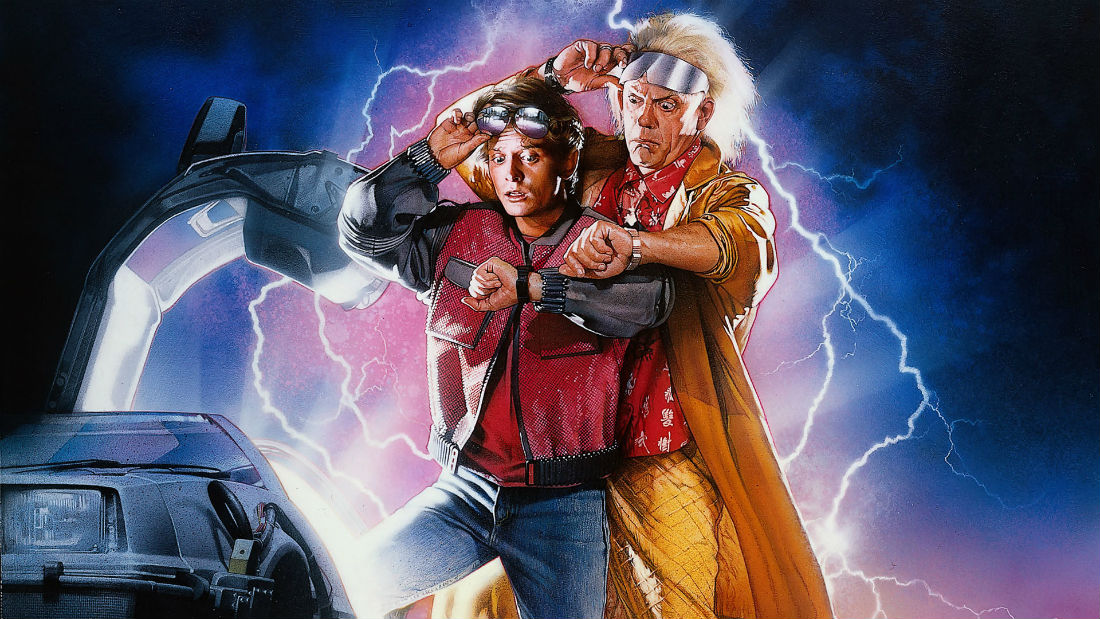Scenario Planning: A Field Guide (Back) To The Future?
A flash of light as the time machine lands outside Marty’s house, it crashes into the trashcans and out steps a futuristic looking Doc Brown looking panicked as he reveals part of the future to Marty.
“It’s your kids Marty, something has to be done about your kids.”
If only we could see the future we could be better prepared. If I had known that was going to happen I would have made a different decision. Refrains you may have heard (or even said) but fear not, there is hope, there is a thing called Scenario Planning.
Scenario Planning (sometimes called “scenario and contingency planning”) is a structured way for organisations to think about the future. These scenarios are meant to help us recognise and adapt to changing aspects of our present environment. They form a method for articulating the different pathways that might exist for you tomorrow, and finding your appropriate movements down each of those possible paths. (The Art of the Long View – Peter Schwartz).
In procurement we have access to a wealth of information about what may happen in the future, we get this from regular meetings with our suppliers and total supply chain. So we have access to lots of information (or can do if we schedule the above) but what do we do with it?
The concept of Scenario Planning is not new, Shell has been using scenarios for over 40 years and here is a link to what they think may happen to 2025.
So how should we start putting these plans together? We first need to understand the different types of uncertainty that there are and how these relate to our organisation so we can identify and prioritise the critical uncertainties (business, industry, environmental etc.)
KPMG outlined their Scenario Planning process a report called mapping the future and Jay Ogilvy writing in Forbes magazine has also suggested a process. I have summarised and tried to give some specific practical suggestions of how to conduct below:
1. Scan your external and internal environment for emerging trends and issues
- Meet with incumbent and non-incumbent suppliers regularly to understand trends and what their strategic plans are.
- Meet with key internal stakeholders are regularly to understand the future business needs. It’s also imperative to identify which issues to focus on (i.e. the ones that will have the most impact).
2. Select the most realistic alternatives and develop deep responses
- By focusing on the critical uncertainties, achieved by the group discussing and agreeing which of the issues need more attention this allows for a matrix to be developed and the potential scenarios to be placed within them. This will then give you focus on the areas that are most likely.
3. Build scenarios of the future using one or more of the quantitative multi-dimensional tools
- PESTLE and Porters five forces are excellent tools that you can use to help build profiles and give you a framework for data collection.
4. Identify the early indicators
- What are the attributes of the scenario?
- What are the catalysts that would indicate that one of the scenarios is likely to happen?
5. Update and constantly review based on the early indicators
- This isn’t a static model. It’s constantly evolving and therefore the need to update your scenarios with more information as it becomes evident is imperative. Consider:
- What RSS feeds do you subscribe to?
- What meetings do you have set up
- How are you collecting information?
- What social media sites are you using for information?
Mckinsey identified some great tips and tricks for the use of Scenario plans, which also contains some cautionary advice about them namely:
- Analysis Paralysis
- Poor internal communication
- Too narrow an outcome
- Consider the more outlandish ones as well as the ones relatively close to the “norm”
- Know when to use and when not to
To get you started here are some examples around future thinking:
- The Guardian had some thoughts about 2025
- HBR has conducted a survey on the use of them
- Procurement Leaders have produced a blog of various people and their future ideas
- Here is a look into the not too distant future from Mckinsey
- Some future thoughts about the IT industry
- And Procurious carried out the Big Ideas Summit
As an example of future thinking the Faculty in 2013 produced future ready white paper which identified the following areas and conducted in depth reviews of them.
Geopolitical uncertainty will impact how we look at and calculate risk; shifting demographics will change the way we look at talent; digital revolution will change the way connect and social awareness will impact and change the supply chain.
Scenario planning is important to us and our organisation as we can’t all rely on a friendly scientist coming back from the future to tell us what is going to happen.
Great Scott Marty, this is heavy…
